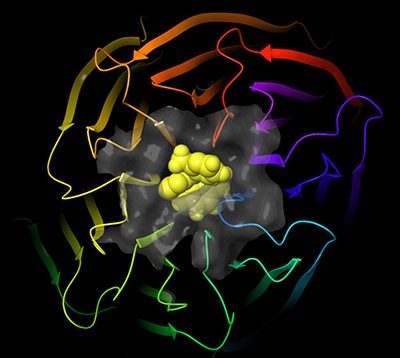FOR IMMEDIATE RELEASE | April 09, 2021
Toward a reliable oral treatment for sickle cell disease
Note to journalists: Please report that this research will be presented at a meeting of the American Chemical Society.
A press conference on this topic will be held Friday, April 9, at 10 a.m. Eastern time online.
WASHINGTON, April 9, 2021 — For the millions of people worldwide who have sickle cell disease, there are only a few treatment options, which include risky bone marrow transplants, gene therapy or other treatments that address a subset of symptoms. Today, researchers will describe the discovery of a small molecule with the potential to address the root cause of sickle cell disease by boosting levels of fetal hemoglobin, a healthy form that adults normally do not make. The drug could be formulated into a convenient daily tablet.
The researchers will present their results today at the spring meeting of the American Chemical Society (ACS). ACS Spring 2021 is being held online April 5-30. Live sessions will be hosted April 5-16, and on-demand and networking content will continue through April 30. The meeting features nearly 9,000 presentations on a wide range of science topics.
“Using our proprietary small molecule probe and CRISPR guide RNA libraries, we screened a disease-relevant cell model that allowed us to pinpoint a treatment target,” says Ivan V. Efremov, Ph.D., senior director, head of medicinal chemistry of Fulcrum Therapeutics, who is presenting the work.
Sickle cell disease occurs when the gene responsible for instructing cells to produce two of hemoglobin’s four proteins contains an error. The mutation causes hemoglobin to adopt a rigid, sickle-like shape, which results in reduced oxygen transport throughout the body. The irregularly shaped cells get stuck in the blood vessels, causing painful episodes known as vaso-occlusive crises. The cells also die much sooner than normal red blood cells, leading to anemia. In addition to these symptoms, patients are at high risk of developing stroke, heart disease, kidney failure and other life-threatening conditions.
Interestingly, sickle cell patients don’t begin life with malfunctioning hemoglobin. While in the womb, humans make “fetal” hemoglobin that carries oxygen normally. Three or four months after birth, however, cells stop expressing fetal hemoglobin and switch to an adult version. The adult hemoglobin expressed by sickle cell patients is defective, but they still carry stem cells in their bone marrow with the potential to produce fetal hemoglobin.
Patients that have what is called a hereditary persistence of fetal hemoglobin tap this resource automatically. “They have the sickle cell mutation, but additional mutations result in continued expression of fetal hemoglobin into adulthood,” says Christopher Moxham, Ph.D., chief scientific officer of Fulcrum Therapeutics. With fetal hemoglobin levels around 25-30%, he says, enough red blood cell function is restored so that these patients may become asymptomatic.
The team developed a drug, called FTX-6058, that mimics the effect seen in patients with the hereditary persistence of fetal hemoglobin, as demonstrated in human-derived cell assay systems and mouse models. The drug attaches to a protein inside bone marrow stem cells destined to become mature red blood cells and reinstates their fetal hemoglobin expression. “What is really key is FTX-6058 upregulates fetal hemoglobin across all red blood cells, a pancellular distribution,” Efremov says. “If some red blood cells did not express this, they could still sickle and cause disease symptoms.” Fulcrum began a phase 1 safety trial in healthy adult volunteers last year after preclinical experiments showed an increase in fetal hemoglobin levels to around 25-30%.
“What distinguishes FTX-6058 is that we are targeting the root cause of sickle cell disease,” Moxham says. “Other drugs approved in this space, particularly since 2019, are treating the disease’s symptoms, either the anemia or the vaso-occlusive crises.” Preclinical experiments comparing FTX-6058 with another fetal hemoglobin booster, hydroxyurea, approved in the 1990s, showed the new drug candidate outperforms the current treatment and, according to Moxham, offers the potential for a transformative therapy.
The team is currently designing a phase 2 clinical trial for people living with sickle cell disease that they plan to initiate by the end of 2021. They are also in the process of characterizing the therapeutic molecule further, using genomic technologies and additional cell assay systems to fill in the details of exactly how it works. Beyond sickle cell disease, Fulcrum is also considering a clinical strategy to explore the use of FTX-6058 in people living with β-thalassemia, a blood disorder in which hemoglobin production is reduced.
The researchers acknowledge internal funding from Fulcrum Therapeutics.
To automatically receive press releases from the American Chemical Society, contact newsroom@acs.org.
Note: ACS does not conduct research, but publishes and publicizes peer-reviewed scientific studies.
Media Contact
ACS Newsroom
newsroom@acs.org
View larger image


